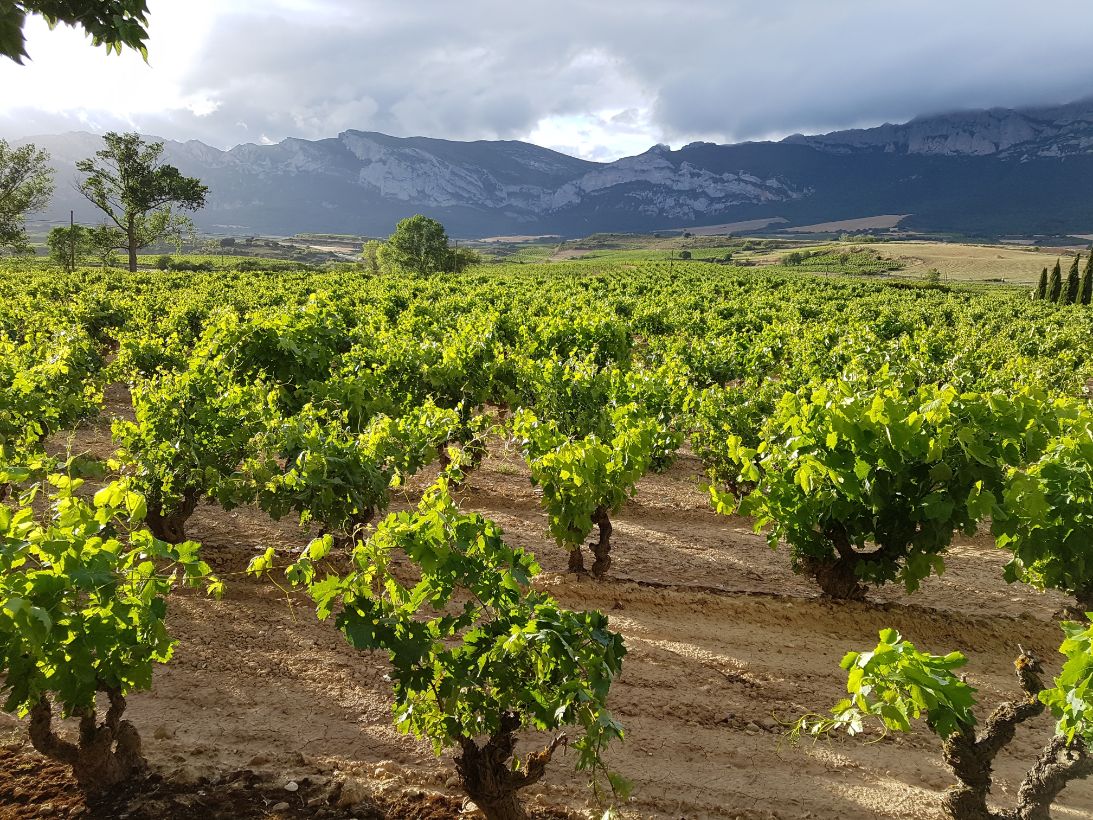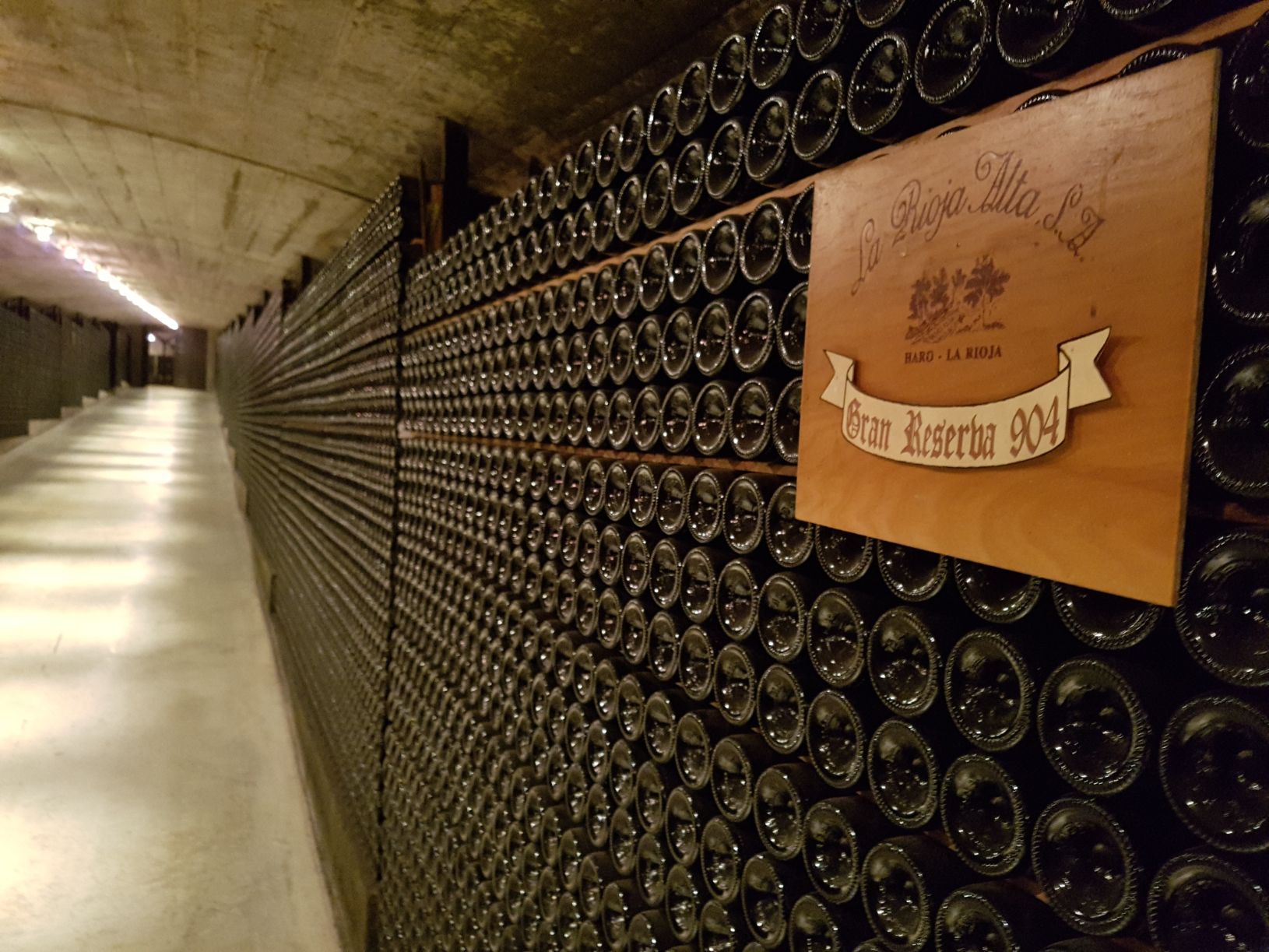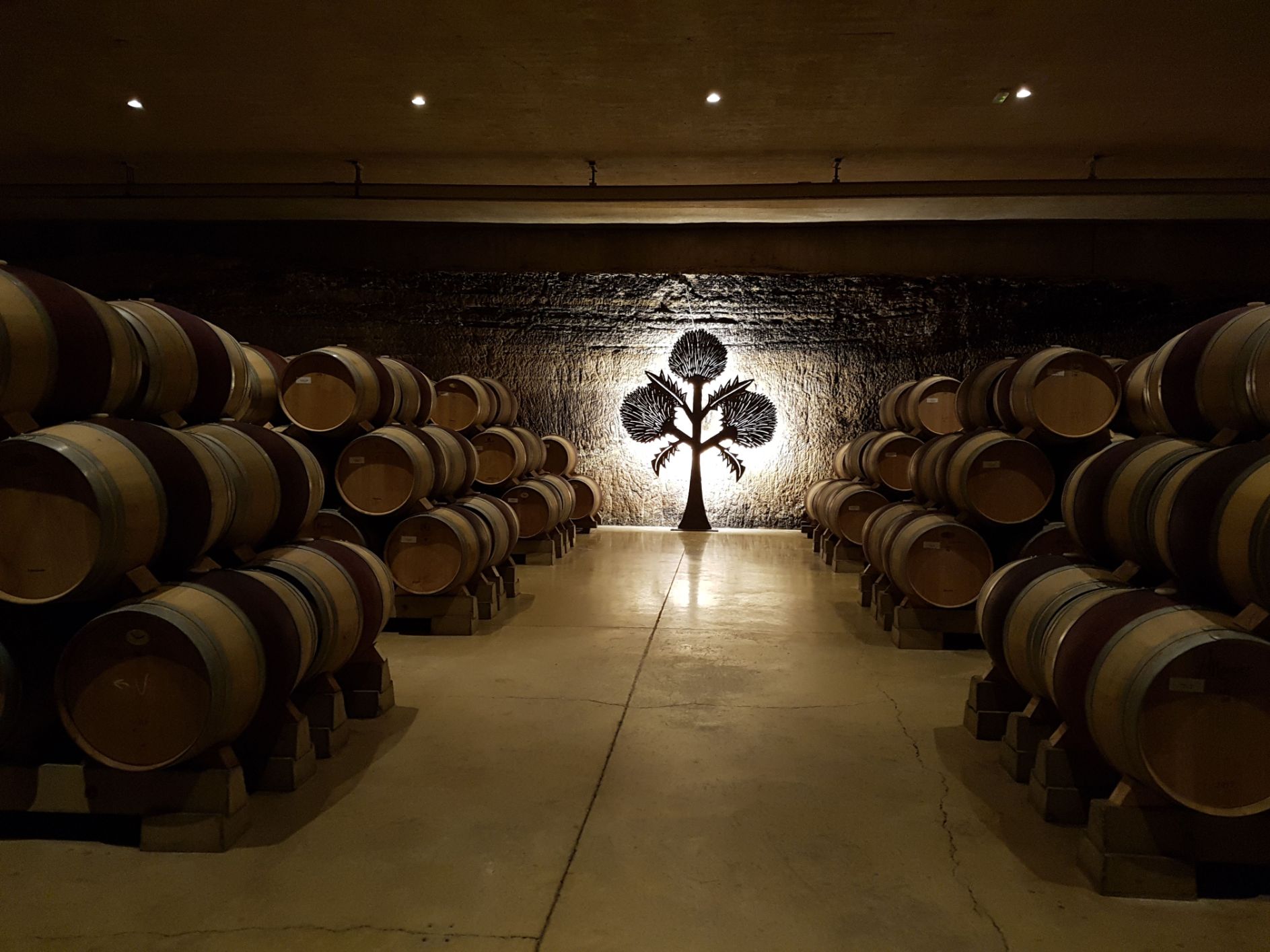
Old head-pruned vines bask in the Spanish sun in between showers last summer.
Top names continue to dominate Spain’s fine wine world with bottles from Vega Sicilia, Alvaro Palacios, Telmo Rodriguez, Pingus, Artadi and López de Heredia accounting for all the top-rated wines in my tastings this year.
However, the real story for Spain is its continued ability to produce outstanding quality wines, 90 points or more, at incredibly low prices from just about all the vineyard regions of the country and priced between $10 and $20 a bottle. Sometimes they are even less. This is a real plus for all of us looking for value, high quality wines. Even some of the top producers such as López de Heredia continue to hold the line with prices.
“We are very aware that our wines are good value for all of the effort that we put into every bottle … but we want our wines to be enjoyed by the people that can really appreciate them and not just those with a lot of money,” said María José López de Heredia whose family has owned R. López de Heredia Viña Tondonia for almost 150 years.
I reviewed more than 1,100 Spanish wines this year in my tasting room in Hong Kong in blind tastings and found literally hundreds of outstanding quality wines. I rated 967 bottles 90 points or more, which highlights the breadth of quality wines being made in Spain at the moment. The median score of the tasting was about 92 points underlying a solid quality for wines in this year’s tasting.
- PSI from Dominio de Pingus emphasizes transparency in winemaking and old vine magic.
- Whites of Spain are diverse and exciting as noted in my tasting.
This said, I was a little disappointed that only 79 wines rated 95 points or more, which suggests that Spain has a lot more to do to produce wines at the upper echelon of quality. This could be due to a number of reasons, such as a number of less than perfect growing seasons. But some of this must also be because many Spanish winemakers are focusing on the low end of the market which limits their ceiling for quality. It would be good to see more wineries making the effort to make more top wines.
This could also explain why so many wines seem to follow a recipe style that I noted in last year’s tasting trip to Spain with Executive Editor Nick Stock and my team (see our video discussion here), where the wines can be outstanding quality but slightly monolithic and predictable with relatively dark colors, rich fruit, firm tannins and new oak. This can be particularly true in Rioja, where the wines are very good to outstanding, but also rather monotonous.
The obvious exceptions to the above are the wines from the long-time respected name of López de Heredia of Rioja. The family-owned winery has been making wines since the late 1870s and continues to make historical and traditional wines in the great Spanish tradition. It makes wines with softness and flavor intensified through long barrel aging and an adherence to Spanish taste of drinkability in wines, and the result is amazing wines for the money.
I still remember my first time traveling to Spain in 1983 as a young reporter for The Wine Spectator and spending time in Madrid and Logrono. I was in awe of how delicious the Riojas were with their soft and savory character. This was both with young wines such as crianzas and long-cellared ones such as gran reservas. Perhaps I was being nostalgic after reading novels about Spain such as Hemingway’s “Death in the Afternoon”, which included references to drinking great bottles of Rioja, but the unique Spanish character of wines still strongly remains in my mind as something to admire and protect. Unfortunately, it is more and more difficult to find, even in Rioja.
“Many people ask use why we don’t make something new,” said López de Heredia. “But for us making new things is not making anything new.”
Her aged whites certainly highlighted her historical winemaking. Current releases include the López de Heredia Rioja Gran Reserva Viña Tondonia White 2001 (98 points), and the López de Heredia Rioja Reserva Viña Tondonia White 2009 and López de Heredia Rioja Reserva Viña Tondonia White 2008 (both 97 points).
- Wines of Alvaro Palacio in Priorat are more balanced and refined than in the past.
- The old fermentation room of R. López de Heredia Viña Tondonia gathers dust until the next harvest.
The Granja de Nuestra Señora de Remelluri Rioja Blanco 2017, 98 points, from Telmo Rodriguez was just as inspiring and continues to be one of my favorites each year in my tastings. Rodriguez always says that he tries to maintain tradition with this wine but with a slightly modern take.
Many people still overlook the wonder of white Riojas and other exciting Spanish whites such as those from Galicia. Some of my other top rated whites included Marqués de Murrieta Rioja Capellanía 2016, Terroir al Limit Priorat Pedra de Guix 2017, Zárate Albariño Rías Baixas Balado 2019, Attis Bodegas y Viñedos España Sitta Doliola 2018, Torres Conca de Barberà Milmanda 2017, and Olivier Rivière Rioja Mirando Al Sur 2017. I scored all of them 95 points.
But this doesn’t mean I don’t admire modern wines focusing more on transparency, balance and drinkability. This helps shows the true character of wines being produced in some amazing areas such as the Canary Islands, Galicia and Priorat. Many producers, both established and new, are focusing on gentle fermentations and macerations in their winemaking as well as reduced new wood so the nature and character of their grape types, soils and climates come clearly through in the bottle.
Some of the best examples in my tastings were the wines from Bodegas Jiménez-Landi in the region of Toledo, Comando G outside of Madird and bottles from Envínate and Compañia de Vinos Telmo Rodriguez in Galicia. These wineries make wines with supreme finesse and harmony as exemplified in the Bodegas Jiménez-Landi Castilla y León Las Iruelas 2017, Comando G Sierra de Gredos Mataborricos 2018, Comando G Vinos de Madrid 1er Rozas 2018, Comando G Vinos de Madrid Rumbo al Norte 2017, Envínate Ribeira Sacra Lousas Viñas de Aldea Vinos Atlánticos 2018 and Envínate Vinos Atlánticos Táganan 2018.

Thousands of bottles age in the cellars of La Rioja Alta.
“Spanish wines need to talk about place and not about the winemaking,” said Pablo Eguzkiza, the winemaker with Telmo Rodriguez during a meeting in summer 2019 in Rioja. “People are working with a recipe in Rioja (and other places) while other producers are talking about the map and where their wines are made. They are talking villages and terroirs and grand crus in places like Duero or Priorat.”
Maybe it was my imagination but throughout my tastings this year areas like Ribera del Duero and Priorat did appear to dial in the terroir more, cutting back on the invasive winemaking and new wood for a more sensitive and clear winemaking. This was particularly true with my top wines from Priorat such as the Alvaro Palacios Priorat L’Ermita 2018.
Peter Sisseck, the owner and winemaker of Domino Pingus, has also been fine tuning his tannins and terroir precision in his wines.
That’s why I so much like the wines that he is making under the label of Dominio de Pingus Ribera del Duero PSI. He is working hard with local vine growers to maintain commercial support for their old vines through making, marking and selling his wine based on their heritage vineyards. And they are made in a very sensitive and real way so the wines transmit the quality of their vineyards. The Dominio de Pingus Ribera del Duero PSI 2018 is one of his best ever at 95 points and it costs slightly less than $30 a bottle.

Wines age in the barrel room of Bodegas Roda in Rioja.
“We need to maintain these great old vines in the culture of winemaking in Spain,” said Sisseck last summer during a dinner in his winery.
Certainly, it’s winemakers and wines like the above, as well as the abundance of old vines in the country, that make Spain special. The old head-pruned vines adapt well to the wild and rustic environs and the continued heat and dryness of the growing seasons in Spain make their resilience to such conditions even more important in the winemaking culture. Where else can you buy such good wines in the world for reasonable prices?
There is so much more to learn and to drink from Spain. This year’s tastings clearly highlighted where Spanish winemaking is today, both the ups and downs, but it also showed the exciting diversity taking place as well as the challenges for wine producers. It doesn’t have to cost a fortune to drink outstanding quality Spanish wines, and that only makes it even more attractive.
– James Suckling, CEO & editor





